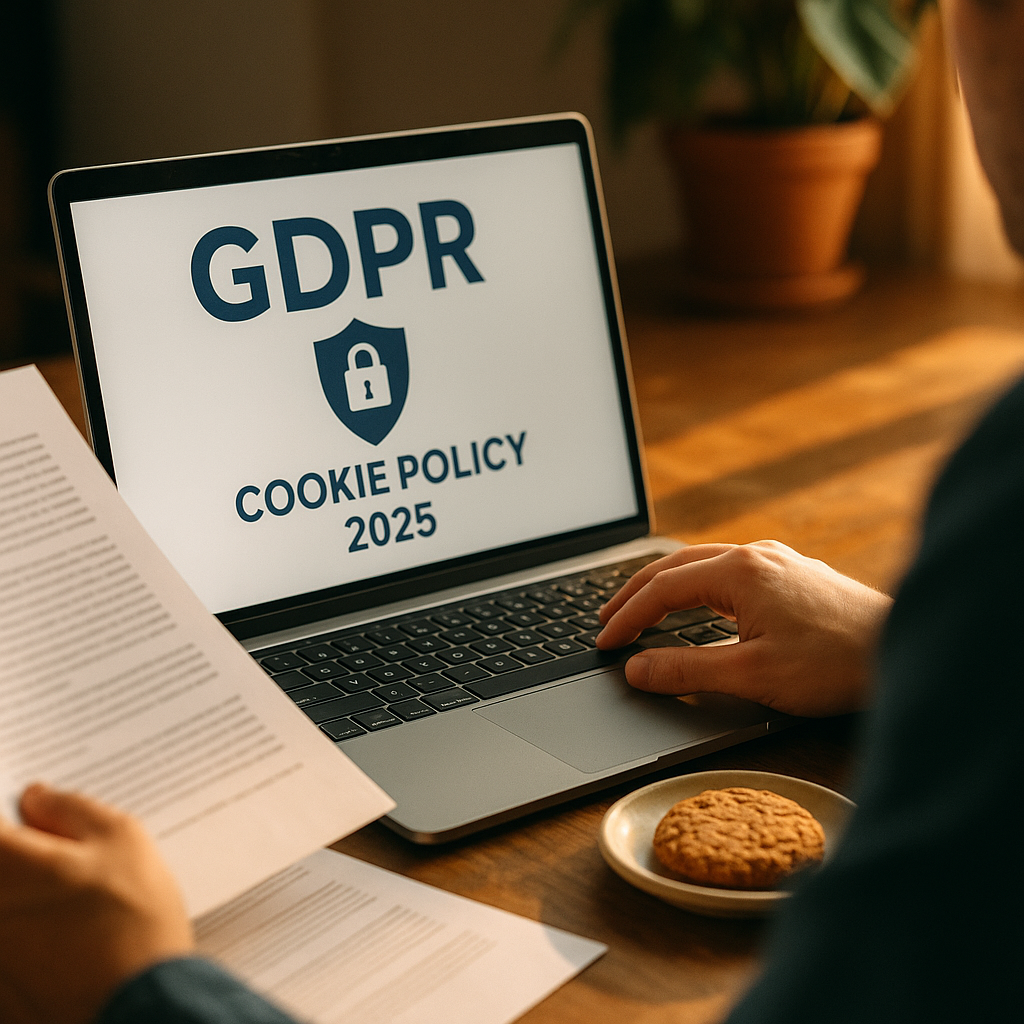A clear and comprehensive cookie policy that is GDPR compliant is essential for building user trust and meeting legal requirements in 2025. With privacy rules continuously evolving, it’s crucial to ensure your website’s cookie policy is up-to-date, easy to understand, and fully transparent. Learn the foolproof steps to create a GDPR-ready cookie policy that protects both you and your users.
What Makes a Cookie Policy GDPR Compliant?
To be GDPR compliant, a cookie policy must explicitly state how cookies are used, why they’re needed, and offer users meaningful control. The General Data Protection Regulation (GDPR) demands transparency, so you need to explain cookie usage in straightforward language. In short, your cookie policy must:
- Clearly define what cookies are and how they operate on your site
- Specify the types of cookies in use (e.g., essential, analytical, marketing)
- List third-party cookies and their purposes
- Detail how users can manage or withdraw consent at any time
- Provide up-to-date contact information for privacy queries
By fulfilling these basic requirements, you lay the groundwork for a policy that earns user trust and aligns with current privacy frameworks.
Structuring Your Cookie Policy for Maximum Clarity
A clear and user-friendly structure is fundamental to a comprehensive GDPR cookie policy. Begin by outlining what cookies are, followed by sections for each cookie category. Use subheadings and bullet points to improve readability. Remember, users should quickly grasp:
- Why each cookie type is collected
- Whether the cookies are first-party or third-party
- How long cookies persist on their devices
Consider linking each cookie listed to its provider’s policy or including a short description. Use plain language and avoid legal jargon—transparency is key.
Describing Types and Purposes of Cookies Used
Your cookie policy should comprehensively list all cookies used on your site, grouped by type. In 2025, most organizations classify cookies as follows:
- Strictly Necessary Cookies: Enable core website functionality. Users cannot disable these without affecting site operations.
- Performance/Analytical Cookies: Collect anonymized data about user interactions for site improvement.
- Functional Cookies: Store user preferences to enhance their experience.
- Targeting/Advertising Cookies: Track browsing habits for personalized advertising. These require explicit user consent under GDPR.
For each cookie category, indicate:
- Name of the cookie
- Provider (including third parties)
- Purpose and data collected
- Duration (session or persistent)
Transparency in this section minimizes confusion and boosts compliance.
Obtaining Valid Consent from Users
One of the cornerstones of a GDPR compliant cookie policy is genuine user consent. According to the latest guidelines, implied consent is no longer adequate. Your policy must explain how your cookie consent banner works and how users can:
- Accept or reject non-essential cookies
- Change preferences at any time
- Withdraw consent easily, without negative consequences
Incorporate clear instructions for opting out of third-party cookies, especially those tracking personal data. Use user-friendly toggles, not pre-checked boxes. Auditable consent logs can demonstrate GDPR compliance in case of data protection authority reviews.
Keeping Your Cookie Policy Updated and Accessible
GDPR requires your cookie policy to always be accurate and accessible. Technology and regulatory guidance can change quickly, so your policy should have:
- A clear “last updated” date (ensure this reflects the most recent edit)
- Regular reviews—ideally every 6 to 12 months, or after any operational change
- Notice to users when significant updates are made
- A visible link to the cookie policy from every page, often via the website footer
This ongoing commitment to transparency and accuracy meets both user expectations and legal requirements in 2025.
Best Practices for Writing a Transparent Cookie Policy
To ensure your cookie policy stands up to user and regulatory scrutiny, employ these expert-approved best practices:
- Prioritize clarity: Write for a general audience, avoiding technical and legal language
- Address local regulations: Consider factors like ePrivacy Directive compliance for EU users
- Engage in plain language review: Have non-specialist readers test comprehensibility
- Integrate feedback: Monitor user queries and update your policy to address common uncertainties
- Complement with a privacy policy: Link to your overall data protection practices for complete transparency
By following these practices, your cookie policy demonstrates expertise, authoritativeness, and a commitment to user protection—helping you avoid fines and foster lasting trust.
FAQs: Cookie Policy and GDPR Compliance
-
What is a cookie policy and why is it important?
A cookie policy explains how a website uses cookies and similar technologies to collect information from users. It’s vital for transparency and legal compliance, helping users make informed choices and protecting your business from regulatory penalties.
-
What should a GDPR compliant cookie policy include?
Your policy should detail all cookies in use, their purpose, duration, data collected, third-party involvement, and how users can manage their preferences and withdraw consent at any time.
-
Can I use cookies without user consent?
Only strictly necessary cookies (those essential for basic site functionality) can be set without user consent under GDPR. All other cookies, especially for analytics or advertising, require explicit opt-in consent.
-
How often should I update my cookie policy?
Review and update your cookie policy at least once or twice a year, or whenever you change cookies, technologies, or data partners. Clearly indicate the last update date in your policy.
-
What is the risk of not having a compliant cookie policy?
Failure to comply with GDPR on cookies can lead to substantial fines, reputational damage, and loss of user trust. Regulatory enforcement has increased since 2020, with more data protection authorities conducting audits in 2025.
In summary, writing a clear and comprehensive cookie policy that is GDPR compliant ensures both legal safety and user trust. By following best practices for transparency, structure, and ongoing updates, your website will meet 2025’s stringent privacy expectations and regulatory standards with confidence.
